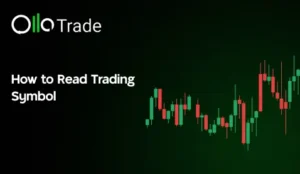Chart patterns are the hidden signals of the market. They narrate a tale about what might occur next. Learning and recognizing these patterns in real-time will help you to avoid second-guessing and make smart and fast decisions. Whetever you’re new or have been trading for a while.
The most typical chart patterns you’ll see are compiled in a cheat sheet, complete with simple instructions and illustrations. It’s designed to be a quick reference you can use while paper trading or setting up alerts with your stock scanner. No jargon, no fluff, just the essentials to help you read the market’s moves with more confidence.
What Is a Chart Patterns Cheat Sheet?
A chart patterns cheat sheet is a quick-reference guide packed with visuals and short notes that help you recognize common chart patterns, understand what they signal, and decide how to trade them.
- It is a shortcut for spotting setups without digging through bulky textbooks or relying on guesswork.
- It’s a game-changer, especially for beginners.
- When you’re in the middle of analyzing a trade chart and time is ticking, having this cheat sheet handy means you can quickly confirm whether that formation you’re seeing is legit.
- It sharpens your decision-making by offering clarity and confidence in the heat of the moment.
Whether you’re doing paper trading to practice or scanning live charts, this cheat sheet becomes a go-to tool during trading hours, pre-market prep, or even weekend review sessions. Bookmark this page or print it out and make it your desk companion.
Most Common Trade Chart Patterns You Must Know
Understanding chart patterns doesn’t require a PhD, just a bit of practice and a trained eye. Some common chart patterns are following:
- Head and Shoulders
- Ascending Triangles
- Descending Triangle
- Double Bottom
- Symmetrical Triangle
- Cup and Handle
- Double Top
- Rounding Bottom
- Wedge
Patterns aren’t magic, but they’re powerful hints. The more you practice, especially on a paper trading account, the better you’ll get at reading the rhythm of the market.
How to Use a Chart Pattern Cheat Sheet in Paper Trading?
Paper trading lets you experiment without burning through real money. And when you’re armed with a solid chart pattern cheat sheet, you’re basically walking into that sandbox with a blueprint in hand. Now let’s dissect how to use it.
Understand the Cheat Sheet Before You Dive In
Spend a little time to get friendly with your cheat sheet before you jump into any charts. It is like studying a map before a hike, you want to know what you’re looking at before heading into the wild.
- Reversal Patterns
These are your first indicators that the present trend may be in decline. When you see these, the market could be gearing up for a U-turn.
Tip: When a Head and Shoulders pattern shows up, look closely at the “shoulders.” Are they symmetrical? Is the volume dropping? Or Details matter.
- Continuation Patterns
These patterns usually tell you, “The trend’s not done yet.” Patterns like flags, pennants, and triangles are like pit stops. Get used to spotting them in the middle of a strong move.
- Entry and Exit Rules
Although frequently disregarded, this section is crucial. The cheat sheet should show you ideal entry points, stop-loss zones, and profit targets for each pattern. These aren’t just suggestions; they’re your seatbelt in case the trade takes a turn.
Apply the Cheat Sheet in Real-Time Paper Trading
Okay, now let’s roll up sleeves. You’ve got your cheat sheet, your paper trading platform is open, and charts are live. This is how theory is applied.
- Identify the Pattern
Start by scanning the chart. Use your cheat sheet as a reference manual. The more patterns you see, the more natural they become.
- Confirm the Pattern
This is where most beginner traders slip up because they are rushing. Slow down. Make sure all the boxes are checked: are both “shoulders” clear in Head and Shoulders? Confirm before you commit.
- Determine Trend Direction
You must read the road signs; patterns by themselves are not sufficient. Check support and resistance levels. In general, bullish momentum is indicated by a breakout above resistance.
- Analyze Volume
The volume is like background music. You can trade without it, but you’ll miss half the story. In many patterns, rising volume on breakouts confirms conviction. If the breakout happens in a whisper, be cautious.
- Measure the Potential Move
Use the “measured move” technique. After measuring the first flagpole in a flag pattern, project that length forward from the breakout point. It won’t always be exact, but it gives you a realistic target to aim for.
- Set Entry and Exit Points
This is your game plan. Based on what you see:
- Choose a safe entry point.
- Set a stop-loss a little outside the pattern boundaries.
- Set a target price using your measured move or the next key level.
Speed Up Pattern Spotting with a Reliable Stock Scanner
Spotting chart patterns in real-time can feel like looking for a needle in a haystack, especially when markets move fast. That’s where a reliable stock scanner steps in as your pattern-hunting sidekick. It is built to sift through thousands of tickers in seconds, highlighting only those that match specific technical setups. Instead of staring at charts all day, you can set up custom filters to scan for patterns that match your cheat sheet.
Most modern platforms, like MT 5, offer flexible scanners that let you plug in parameters based on volume spikes, trendlines, or even candlestick shapes. Configure your scanner to send alerts when those patterns pop up. Integrate your cheat sheet with your scanner setup for real-time alerts, and you’ll catch more trades without the burnout.
Final Thoughts
At the end, trading isn’t about guessing, it’s about recognizing patterns, trusting your tools, and making confident moves. Chart patterns cheat sheet isn’t just a guide; it’s your fast-lane pass to reading the market smarter, not harder. Keep it close, stay curious, and let the patterns do the talking.
Take your chart pattern skills live with OLA Trade to turn pattern recognition into real opportunities.









